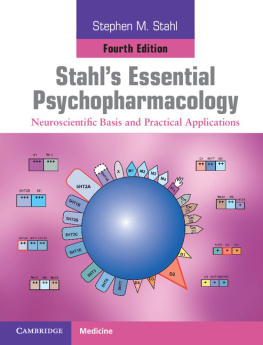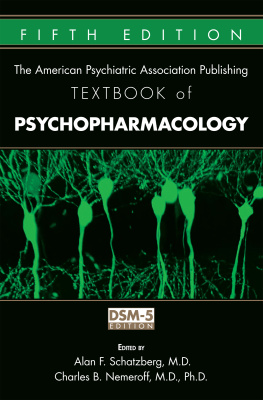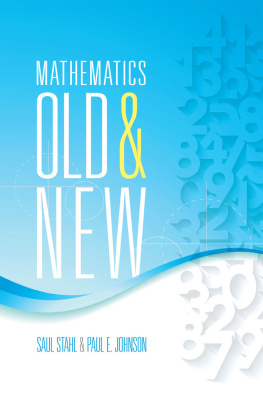Stahls Essential Psychopharmacology
Neuroscientific Basis and Practical Application
With this fully revised Fourth Edition, Dr. Stahl returns to the essential roots of what it means to become a neurobiologically empowered psychopharmacologist, expertly guided in the selection and combination of treatments for individual patients in practice.
Embracing the unifying themes of symptom endophenotypes, dimensions of psychopathology that cut across syndromes, and symptoms and circuits, every aspect of the text has been updated to the frontiers of current knowledge, with the clarity of explanation and illustration that only Dr. Stahl can bring.
Integrating much of the basic neuroscience into the clinical chapters, and with major additions in the areas of psychosis, antipsychotics, antidepressants, impulsivity, compulsivity, and addiction, this is the single most readily readable source of information on disease and drug mechanisms.
This remains the essential text for all students and professionals in mental health seeking to understand and utilize current therapeutics, and to anticipate the future for novel medications.
Stahls Essential Psychopharmacology
Neuroscientific Basis and Practical Application
Fourth Edition
Stephen M. Stahl
Adjunct Professor of Psychiatry, University of California at San Diego, CA, USA; Honorary Visiting Senior Fellow in Psychiatry, University of Cambridge, Cambridge, UK
Nancy Muntner
CAMBRIDGE UNIVERSITY PRESS
Cambridge, New York, Melbourne, Madrid, Cape Town, Singapore, So Paulo, Delhi, Mexico City
Cambridge University Press
The Edinburgh Building, Cambridge CB2 8RU, UK
Published in the United States of America by Cambridge University Press, New York
www.cambridge.org
Information on this title: www.cambridge.org/9781107025981
Stephen M. Stahl 1996 , 2000, 2008, 2013
This publication is in copyright. Subject to statutory exception and to the provisions of relevant collective licensing agreements, no reproduction of any part may take place without the written permission of Cambridge University Press.
First edition published 1996
Second edition published 2000
Third edition published 2008
Fourth edition published 2013
Printed and bound in the United Kingdom by the MPG Books Group
A catalog record for this publication is available from the British Library
Library of Congress Cataloging in Publication data
Stahl, S. M.
Stahls essential psychopharmacology : neuroscientific basis and practical
application / Stephen M. Stahl ; with illustrations by Nancy Muntner. 4th ed.
p. ; cm.
Essential psychopharmacology
Includes bibliographical references and index.
ISBN 978-1-107-02598-1 (Hardback) ISBN 978-1-107-68646-5 (Paperback)
I. Title. II. Title: Essential psychopharmacology.
[DNLM: 1. Mental Disordersdrug therapy. 2. Central Nervous System
drug effects. 3. Psychotropic Drugspharmacology. WM 402]
616.8918dc23
2012036791
ISBN 978-1-107-02598-1 Hardback
ISBN 978-1-107-68646-5 Paperback
Cambridge University Press has no responsibility for the persistence or accuracy of URLs for external or third-party internet websites referred to in this publication, and does not guarantee that any content on such websites is, or will remain, accurate or appropriate.
Every effort has been made in preparing this book to provide accurate and up-to-date information which is in accord with accepted standards and practice at the time of publication. Although case histories are drawn from actual cases, every effort has been made to disguise the identities of the individuals involved. Nevertheless, the authors, editors and publishers can make no warranties that the information contained herein is totally free from error, not least because clinical standards are constantly changing through research and regulation. The authors, editors, and publishers therefore disclaim all liability for direct or consequential damages resulting from the use of material contained in this book. Readers are strongly advised to pay careful attention to information provided by the manufacturer of any drugs or equipment that they plan to use.
In memory of Daniel X. Freedman, mentor, colleague, and scientific father
Preface to the fourth edition
For this fourth edition of Stahls Essential Psychopharmacology you will notice there is a new look and feel. With a new layout, displayed over two columns, and an increased page size we have eliminated redundancies across chapters, have added significant new material, and yet have decreased the overall size of the book.
Highlights of what has been added or changed since the 3rd edition include:
- Integrating much of the basic neurosciences into the clinical chapters, thus reducing the number of introductory chapters solely covering basic neurosciences.
- Major revision of the psychosis chapter, including much more detailed coverage of the neurocircuitry of schizophrenia, the role of glutamate, genomics, and neuroimaging.
- One of the most extensively revised chapters is on antipsychotics, which now has:
- new discussion and illustrations on how the current atypical antipsychotics act upon serotonin, dopamine, and glutamate circuitry
- new discussion of the roles of neurotransmitter receptors in the mechanisms of actions of some but not all atypical antipsychotics
- 5HT7 receptors
- 5HT2C receptors
- 1-adrenergic receptors
- completely revamped visuals for displaying the relative binding properties of 17 individual antipsychotics agents, based upon log binding data made qualitative and visual with novel graphics
- reorganization of the known atypical antipsychotics as
- the pines (peens)
- the dones
- two pips
- and a rip
- inclusion of several new antipsychotics
- iloperidone (Fanapt)
- asenapine (Saphris)
- lurasidone (Latuda)
- extensive coverage of switching from one antipsychotic to another
- new ideas about using high dosing and polypharmacy for treatment resistance and violence
- new antipsychotics in the pipeline
- brexpiprazole
- cariprazine
- selective glycine reuptake inhibitors (SGRIs, e.g., bitopertin [RG1678], Org25935, SSR103800)
- The mood chapter has expanded coverage of stress, neurocircuitry, and genetics.
- The antidepressant and mood stabilizer chapters have:
- new discussion and illustrations on circadian rhythms
- discussion of the roles of neurotransmitter receptors in the mechanisms of actions of some antidepressants
- melatonin receptors
- 5HT1A receptors
- 5HT2C receptors
- 5HT3 receptors
- 5HT7 receptors
- NMDA glutamate receptors
- inclusion of several new antidepressants
- agomelatine (Valdoxan)
- vilazodone (Viibryd)
- vortioxetine (LuAA21004)
- ketamine (rapid onset for treatment resistance)
- The anxiety chapter provides new coverage of the concepts of fear conditioning, fear extinction, and reconsolidation, with OCD moved to the impulsivity chapter.
- The pain chapter updates neuropathic pain states.










